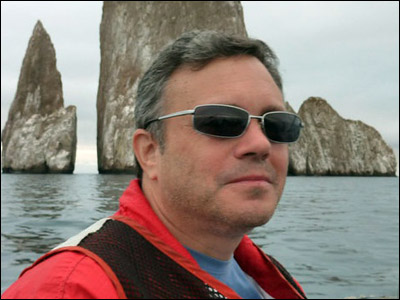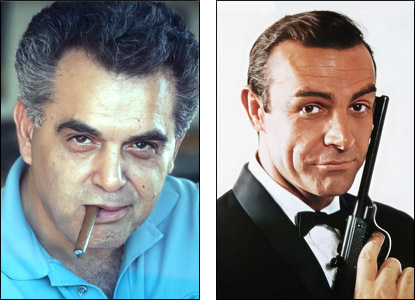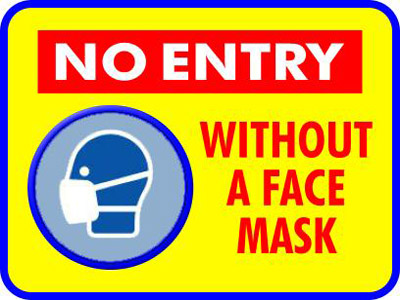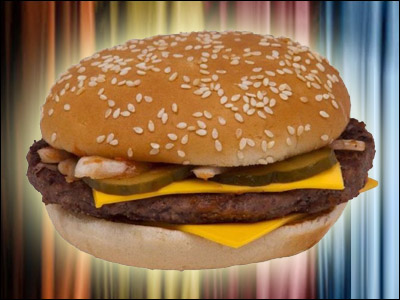The New York Times has an article today about the effectiveness of masks in warding off COVID or other nasty diseases. It reinforces my belief that none of the studies have settled this question and that the folks who claim it's been definitively proven, one way or the other, are either relying on faulty studies or misinterpreting what they say.
And Still More About Shecky
The Hollywood Reporter notes the passing of our friend.
More About Shecky
Leonard Maltin has a nice tribute up to his friend, my friend and a lot of folks' friend, Rick Scheckman.
WonderFul WonderCon
WonderCon 2023 starts two weeks from today so it's time for this…

Friday, March 24 — 4:30 PM to 5:30 PM in Room 213AB
HOW TO WRITE FOR ANIMATION
Did you ever dream of writing cartoon shows? Well, here's your chance to find out how to do it from three guys who have written hundreds and hundreds of them. The secrets of animation writing will be divulged by WonderCon special guests Tom Ruegger (Pinky and the Brain, Disney's The 7D), Paul Rugg (Animaniacs, Freakazoid!), and moderator Mark Evanier (The Garfield Show, Dungeons & Dragons).
Saturday, March 25 — Noon to 1:00 PM in Room 207
THE ANNUAL JACK KIRBY TRIBUTE PANEL
Like we do at almost every convention, we remember the man some called The King of the Comics — the man who created or co-created many of the most popular characters ever in the medium. Discussing Jack Kirby are Marv Wolfman (writer/editor), John Morrow (publisher of The Jack Kirby Collector), Paul S. Levine (lawyers for the Kirby Trust), and moderator Mark Evanier (former assistant to Jack Kirby).
Saturday, March 25 — 4:00 PM to 5:00 PM in Room 207
CARTOON VOICES
It's another one of Evanier's popular panels where he gathers a bunch of top animation voice actors to demonstrate their craft, tell how they got into the business, and destroy the script for a beloved fairy tale. Appearing this time are Joe Ochman (current voice of Jiminy Cricket), Kaitlyn Robrock (current voice of Minnie Mouse), Neil Ross (Transformers, G.I. Joe), Cynthia McWilliams (What If?), and Brian Hull (Hotel Transylvania). Mark Evanier (of course) is your host.
As always, times, rooms, panelists and just about everything is subject to change so check your Program Guide and this site to make sure. And as always, I refuse to sit behind a table at a convention for very long so I'll be wandering the hall. If you see me, say howdy. The entire programming schedule can be found online here and remember to consult the COVID policy here.
Rick Scheckman, R.I.P.

It's never a good day when it starts with writing one of these about a good buddy. Rick "Shecky" Scheckman took sick a few days ago and now he's gone. He was a beloved friend among lovers of old movies and TV shows and a helluva nice guy. He was also a longtime friend and employee of David Letterman, starting way back in Dave's early NBC days and continuing to the very end of The Late Show with David Letterman.
He had many duties in that job but the main one was finding and coordinating film clips. If twenty minutes before tape time, the writers suddenly came up with a bit that required film of a monkey washing a cat, Shecky knew where to find it. He was, as a small number of people are in their jobs, utterly irreplaceable.
And as you'll see in the video below that the Letterman crew just posted, he was often pressed into service as an actor in sketches — sometimes dressed as Elvis, sometimes not dressed at all. Dave loved him. And when I visited with him up at Letterman's NBC offices and later at CBS, it was obvious the whole staff did too.
We stayed in touch mostly by e-mail but the last time I was in New York with my friend Amber, we met Shecky for lunch at a Benihana's. Rick and I talked about old movies for two hours while she consumed bowls of Benihaha fried rice. She understood almost none of what we were talking about but after, she said she just adored Shecky anyway — his enthusiasm, his love of film, his whole spirit. Everyone loved the guy for all of that.
Here's the tribute video. Caution: It starts with Shecky naked…one of the few times David Letterman ever seemed actually surprised on his own show…
ASK me: Jack Kirby and James Bond
Jerry Wardlow wrote to ask…
I've read on a couple of websites that in 1970 or around that time, DC discussed having Jack Kirby do a James Bond comic book and they also apparently discussed it with Alex Toth. You are usually cited as the source of this information so I wonder if you could tell us more about what sounds to me like it could have been a spectacular project. Do any preliminary sketches or plots survive?
No preliminary sketches or plots survive, at least by Kirby or Toth. That's because none were done, at least by those two men. I can't swear DC's head honcho (then) Carmine Infantino didn't have someone else do something before the idea was abandoned…but the talk with Jack and later Alex was just talk and not very much of it. Infantino had some sort of option on doing a 007 comic book as a result of a one-shot comic they did in 1963. I wrote about it here.
Well, now that I think of it, let me add this: Infantino said they had some sort of option. That's a long time for that kind of option. I suspect he found out that they'd had such an option once and it had expired…but knowing about it prompted some discussion about maybe getting it back. Whatever, he asked Jack if he thought it was a good idea and if Jack would like to do it.

Jack loved the Bond films — at least, the ones he'd seen as of 1970. He said he thought it was a good idea but that it shouldn't be a regulation 15-cent comic on cheap newsprint, which was then what DC published. What he described sounded more like what we'd call a graphic novel today. That format would enable them to reach an older audience and also to have the book contain the kind of sex 'n' violence that consumers expected of a Bond novel or movie.
He also wanted to edit it but not draw it…though I assume he could have been persuaded to do the first book. The name of Alex Toth came up but I don't think Jack especially wanted to work with Alex. I have a vague memory that he told Carmine, "Toth would be great but if you've got him, just let him do it on his own. I don't need to get involved with that." Later, Carmine did talk to Alex and maybe others but nothing came of it. I don't think DC would ever have done it in the format Jack wanted and it's possible it would not have worked, no matter who did it, as a 15-center with cheap printing and Comics Code approval.
It especially might not have worked if they didn't have the right to make Bond look like Sean Connery…and that was probably not available. At the time, Diamonds Are Forever was in pre-production and it was widely believed that it would be Connery's last time in the role. Roger Moore had not yet been selected to take it over…so what would Bond look like in a comic book then? It was not to be but it sure is an intriguing "What if?"
Today's Video Link
Lord Vinheteiro is that pianist you met here in this post — the guy who plays great piano while staring almost accusingly at the video camera. If I could play that well, you'd see me grinning so wide that I'd be at risk of swallowing my ears. Here he is with a medley of tunes from cartoons…
The Other Day
The other day — Tuesday, if you must know — I went to a doctor-type appointment in a big medical building. In the lobby, there was a desk with some sort of security person behind it and in front of the desk was a person who was screaming bloody murder about the rule that you need to wear a mask to go any farther into this building than that desk. The guy was about forty and he was doing that thing I think is so foolish: Arguing about a rule with someone who doesn't have the power to change or suspend the rule.
He said, loud enough that you might have heard him, that studies have proved that masks don't do shit…and it's true. A few have, though their conclusions are disputed and they phrased it nicer. Studies have also shown that masks — especially the good ones — can be very effective. It's hardly settled law.
The security-type gent wasn't having any of this and when I headed up for my appointment, they were still arguing. And what intrigued me about the argument is that it was taking place in a medical building. In case you don't know what that is, it's a building full of people called doctors. On the floor where I had my appointment — and I'll bet this was true of most every office on every floor there — there was a sign that looked like this…

So this guy is there to see a doctor and the doctor put this sign on his door. I didn't talk to the complainer but if I had, I would have asked him, "Why are you seeking medical advice from a doctor when you don't even trust the sign on his door?"
Today's Video Link
I haven't seen him perform in quite a while but I still mention Lewis Black when asked what comedians I like these days. Here's his current touring schedule and as you can see, he's not appearing in my neck of the woods any time soon. When he is, I'll probably go because I always enjoy what he does. If you see he's coming to someplace near you, check out joining his little fan club because he makes good seats available at a reasonable price to its members.
And just to tide you over, here in its entirety is "In God We Rust," a special he did back in 2012…
Wednesday Morning
I continue to just peek now and then at the news and what I see is amazing. I hadn't thought my opinion of Tucker Carlson, Sean Hannity and the whole Fox News gang could get any lower but, sure enough…
It's looking like there's an interoffice battle going on there to see who can do the most damage to the network's reputation and its chances in the Dominion lawsuit. I know they profit off a kind of viewer who wants to be lied-to and told that Trump won, January 6 was a love-in, Joe Biden thinks he's president but Donald is secretly running the country while at the same time, everything is a mess and all that's because of Joe's actions, etc. But there's gotta come a time when those viewers will go elsewhere for their Alternative Facts…
…but maybe not. There are still people in this world who think Nixon was innocent. If you want to see ten minutes of Jake Tapper doing a good job of debunking the current fibbing, click here. Still, there are sentient human beings who could watch those ten minutes and not be convinced.
And that's probably all I'll have to say about the news this week. I really can't take a lot of this. Posting on more important topics (like old comedians and comic books) may be sparse here for the next few days but as always, I will eventually make it up to you.
Today's Video Link
On this British talk show, John Cleese was confronted with three men who kinda looked and/or kinda sounded like his character, Basil Fawlty. He had to guess which one did the impersonation professionally. Can you?
Woke Wordage
I agree with this article by Matthew Crowley: The word "woke" is becoming increasingly useless since so many people use it with so many definitions…and often, definitions that are inconsistent from one instance to another. It's amazing how many polls ask about it with no stated meaning, thereby allowing respondents to define it any way they like. There are actually people who say, in effect, "I don't know what it means but I know I should oppose it."
Cooking Videos
I watch cooking videos on YouTube for the same reason a lot of people like to watch videos of daring stunts, incredible athletic feats or porn: To see others do things they themselves will never do. I used to be a passable cook but over the years, I have turned into a very poor one because, I suspect, I don't have the patience to do things right. Seems to me that you can't be a great or even a good chef if you don't enjoy the chopping, the measuring, the stirring, the braising, the frying, etc. I simply don't.
Cooking videos, at least, let me see how it's done in fifteen minutes or less because I don't watch the longer ones. I also get to see what goes into certain dishes that I might someday confront on a restaurant menu. As is oft-mentioned on this blog, I have many food allergies and it's crucial that I know what's in something before I decide whether or not to consume it. Cooking videos help.
But two things bug me about them. One is the ending of most where the chef has completed the cooking process and it's time for him or her to taste it and tell us how absolutely fabulous and wonderful and delicious and perfect it is. I'm also bothered by writers who tell me that about their own scripts like they're unbiased observers.
And secondly, an awful lot of cooking videos go like this: "Today, I'm going to show you how I can make a better Whopper than Burger King" or "I'm going to make better Panda Express Beijing Beef than Panda Express" or "I'm going to make a better Arby's Beef 'n Cheddar than Arby's."
First off: Why?
You're trying to replicate and improve on something that was designed to be made cheap and fast. All you have to do is spend more time and money on it. I'm sure you can make a better quarter-pounder than McDonald's just by putting in more than a quarter-pound of beef and buying higher-quality meat.

But if I want one, will yours cost me $5.49 and can I be eating it and an order of great fries in ten minutes? Can I grab one by detouring through a drive-thru on my way to somewhere else? Can I get your burger in a Happy Meal that includes a toy? Bettering fast food is aiming at a real low target. We who buy this stuff buy it for value and convenience more than great quality.
Oh — and because we don't feel like cooking. Lately, I don't and if I did, I don't think I'd spend the time and effort to whip up something I can get with a six-minute car ride or have DoorDash deliver. I've sometimes gotten delivery from Five Guys in fifteen minutes.
I can't make me a burger and fries that good in fifteen minutes, especially since my kitchen is not set up for it. You, maker of online cooking videos, spend hours every day in yours so when you say, "You can make this from items you probably already have in your kitchen," that's true…for you. When you tell me I need to add a tablespoon of balsamic vinegar to something, that's a trip to the market for me…
…and a whole bottle of balsamic vinegar (minus one tablespoon) that will then sit in my cupboard taking up space until months/years from now when I throw it away. YouTube Chefs keep saying they never allow "unitaskers" (implements only good for doing one thing) in their kitchens but for folks like me, a tin of corn starch is a unitasker. Fresh nutmeg is a unitasker. A non-stick muffin tin is a unitasker. I'm just never going to cook so often that it could be otherwise.
I've gained valuable knowledge watching cooking videos. I've learned what I can't do and what not to eat. They're very valuable to me…just not in the way their makers intend.
The Latest
The controlled demolition of the comic strip Dilbert's client list has been the subject of much recent commentary. For a solid overview of what happened, read this piece by Michael Cavna and Samantha Chery. For some observations on the racial/racist aspect of all this, read Lucian K. Truscott IV.
In the meantime, Dilbert creator Scott Adams is sounding increasingly like a guy who has a lot of needless issues. People who aren't like you are only a problem if you insist on getting upset that they aren't like you.
Today's Video Link
As you may know, I love "old" Las Vegas, back when it was run by The Mob or by guys who wanted to project the image of being mobbed-up. There's a lot to love about current Vegas but not nearly as much.
Las Vegas was 75 years old in 1980 and that's when the video below was made. It was produced for the B.B.C. and it's all about the town turning 75. You'll see a lot of buildings that ain't there no more and there are also interviews with Liberace, Wayne Newton, Neil Sedaka and others…
